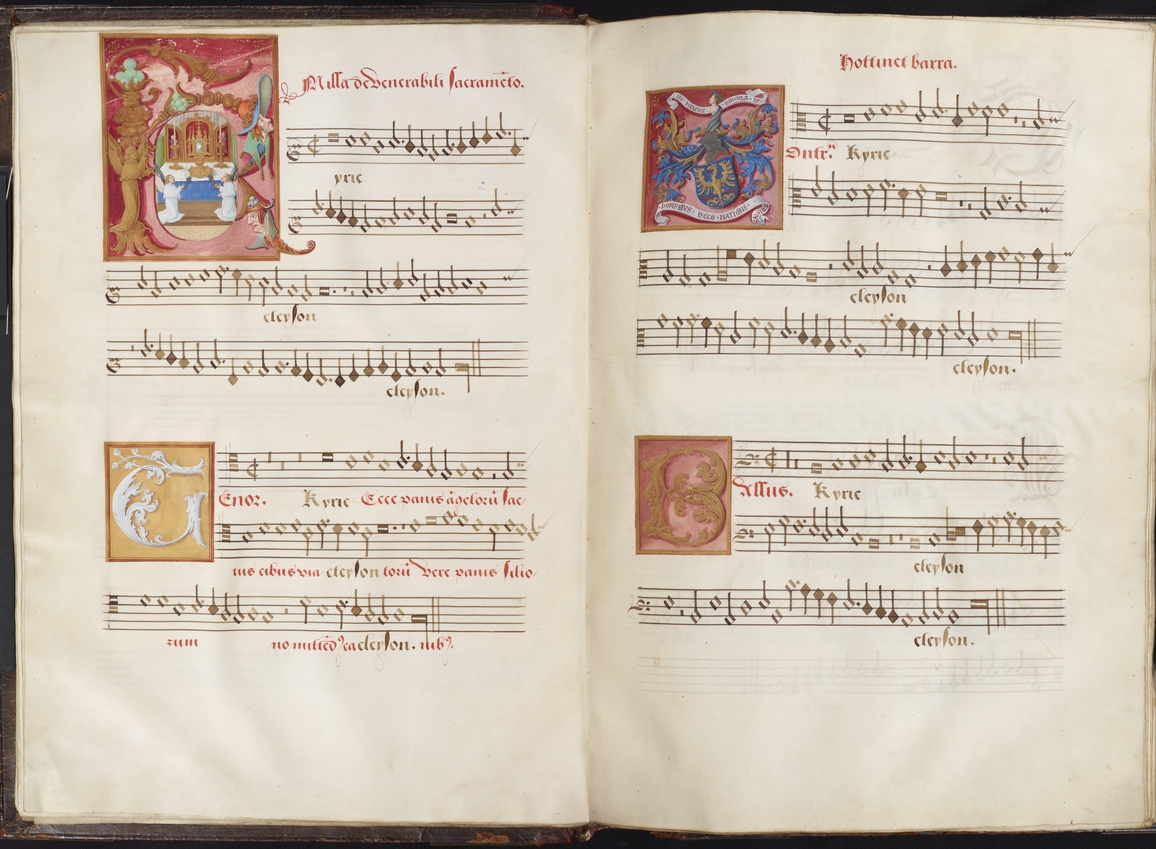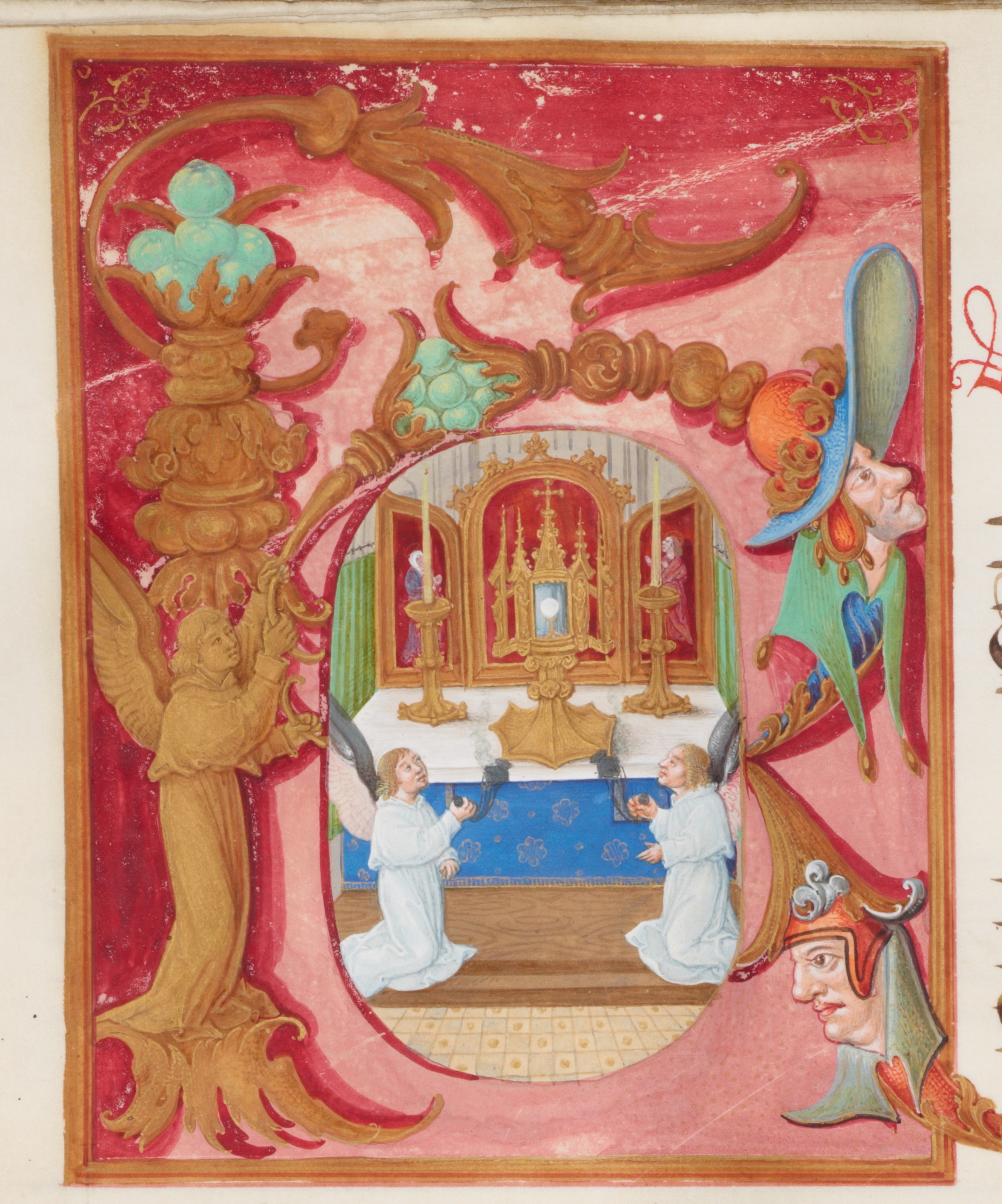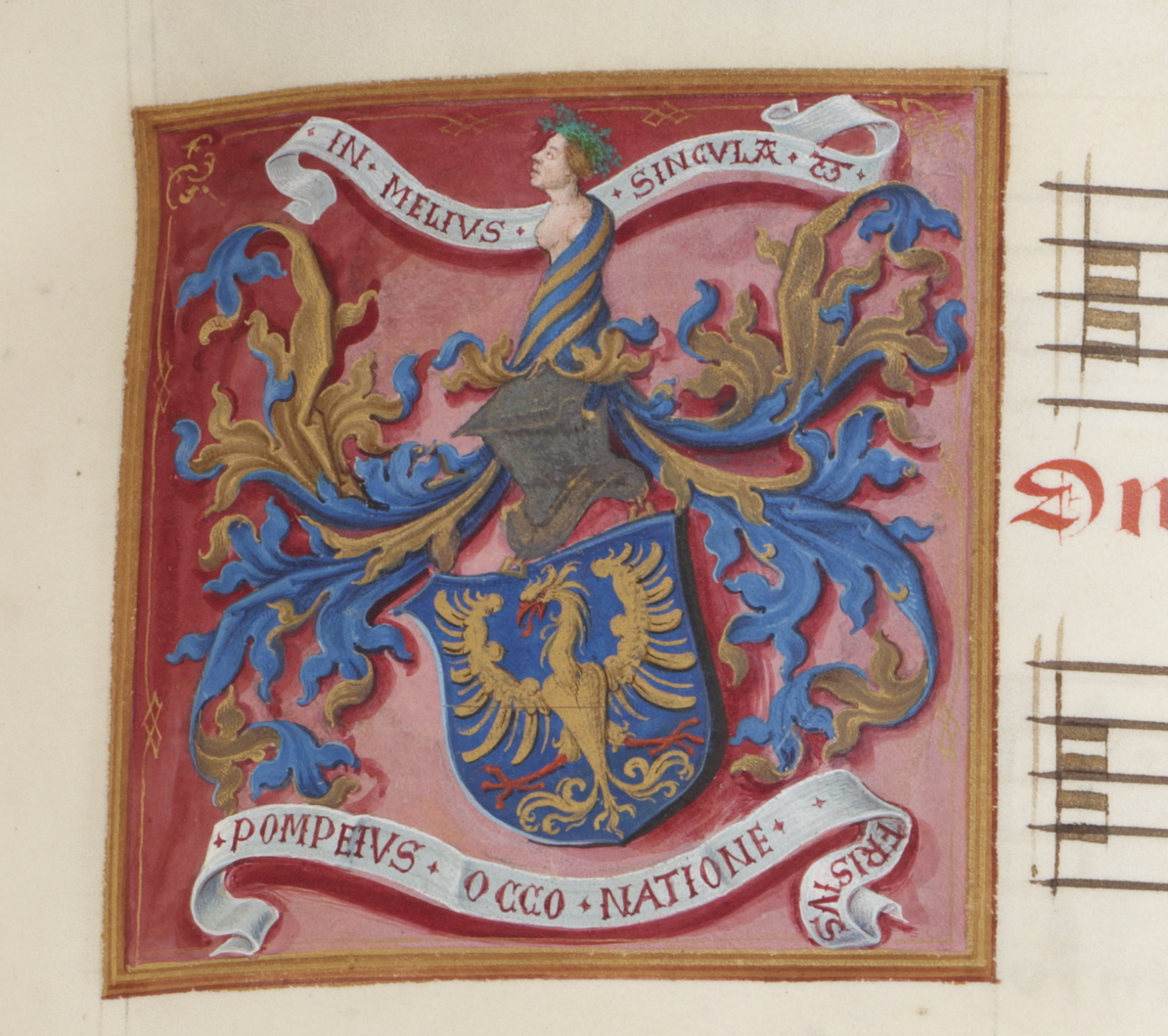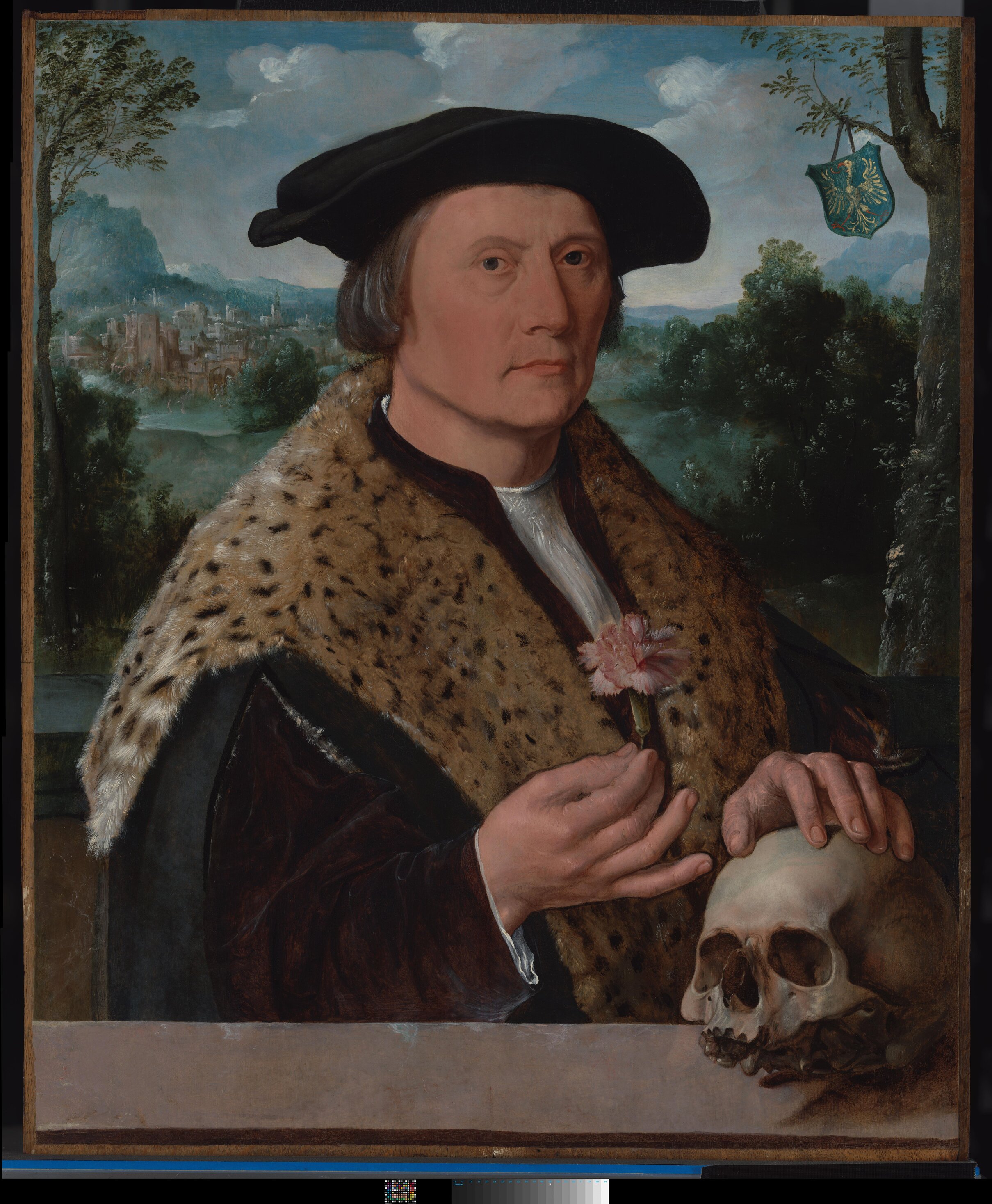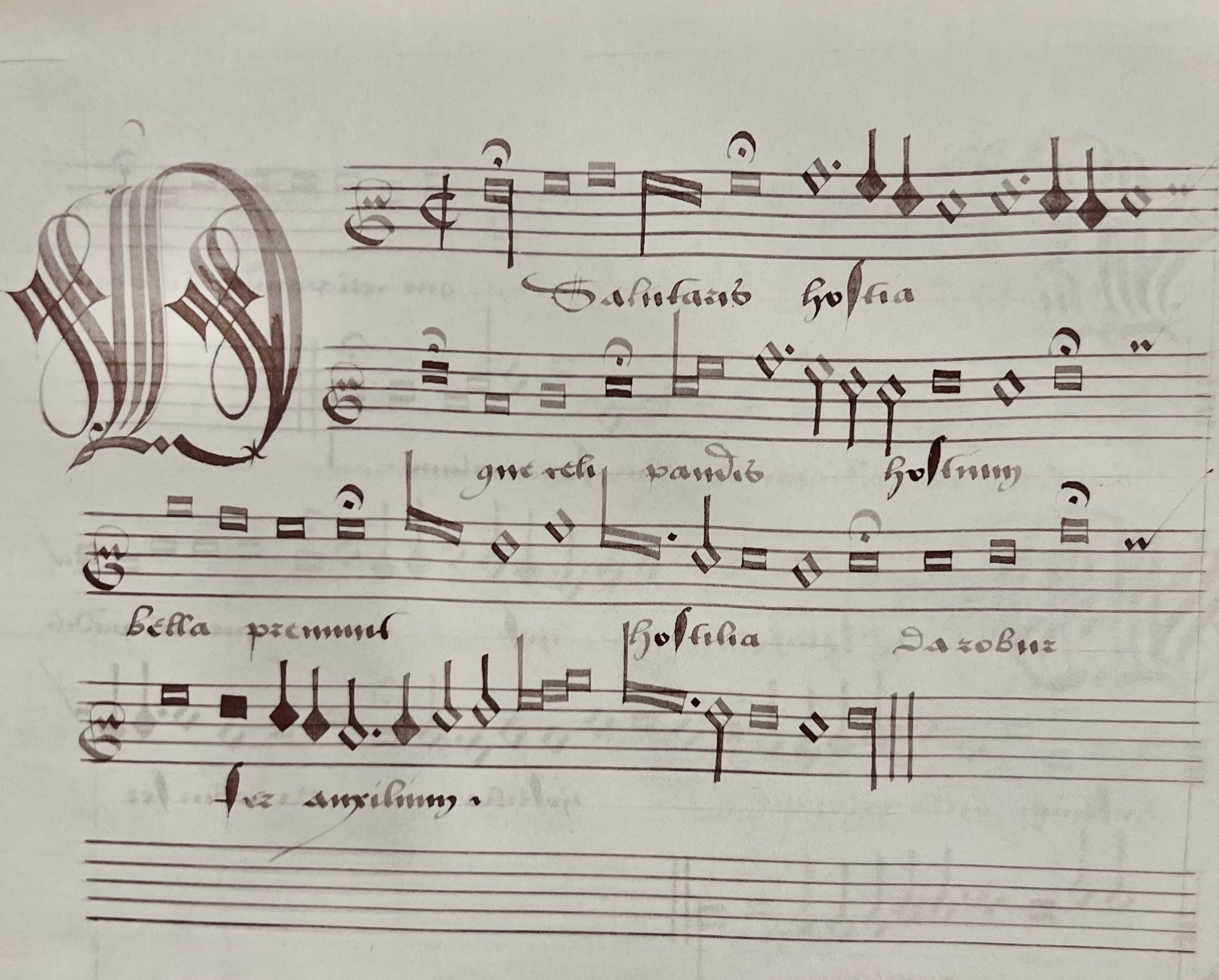A breathtakingly beautiful gift for the Chapel dedicated to the Miracle of Amsterdam
Location
Kapel ter Heilige Stede
Kalverstraat 87
Type
Chapel
Religious community
Former Roman Catholic Church
Object
Choir book with polyphonic music
Maker and date
Petrus Alamire
1515-1517
Visit
Not on display
Not only Adam and Eve lived in paradise. Around 1511, Pompeius Occo, a wealthy banker, humanist and patron of the arts from Augsburg, settled in Amsterdam as agent of the famous Augsburg banking and trading house Fugger. There, he created his own paradise at the beginning of Kalverstraat, in today's Papenbroeksteeg.
By then, Pompeius was probably already married to Gerberich Claesdr, daughter of one of Amsterdam's wealthiest families. She not only gave him six children but also status. He joined Amsterdam's elite and became year by year richer and more influential.
His house 't Paradijs soon filled with children's voices, but also with books, art and music, and with the presence of merchants, scholars, humanists, philosophers and artists. Pompeius had wide interests and a large network that included Erasmus and Margaret of Austria.
Pompeius, bibliophile at heart and then famous for his extensive library, came into contact with the renowned printer Petrus Alamire, based in Antwerp and Mechelen, through Margaret of Austria. He ordered from him a precious collection of music for the Chapel dedicated to the Miracle of Amsterdam.
Although Pompeius was a humanist, he took a liking to the Heilige Stede, located a little further down Kalverstraat. He became churchwarden of the chapel where the Miracle of Amsterdam was venerated in 1513 and would remain so until 1518. The small shrine prospered. Pompeius contributes to the furnishing and decoration of the chapel and altars. Among the many gifts are a church organ, various paintings, statues of saints and illuminated church books.
Heilige Stede
Literally ''holy place''. It refers to the location on Kalverstraat where the Miracle of Amsterdam took place in 1345. After the Protestant takeover in 1578, this church was also called Nieuwezijds Kapel. The original church that stood at this location was demolished in 1908 and was replaced by a new church building also called the Nieuwezijds Kapel.
Miracle of Amsterdam
The Miracle of Amsterdam took place in 1345 in a house on Kalverstraat. After a dying man could not keep down his last Holy Communion, a maid threw the vomit with the Blessed Host into the fireplace. The Host was found intact in the fireplace the next day. They concluded that God was present here in a special way and that He wanted to be worshipped in the Blessed Host at this location. Shortly afterwards, they built a pilgrimage chapel at the same location, which was called the Heilige Stede (Holy Place). This chapel was demolished in 1908.
The Occo Codex is an illuminated choir book, produced between 1515 and 1517. It contains a number of polyphonic works in honour of the Blessed Sacrament. It consists of 151 parchment folio, written in Latin, French and Middle Dutch. The compositions are by several leading composers from the Low Countries including Pierre de la Rue and Josquin Desprez. The illuminations were done by several illuminators and are very diverse. The whole is a work of unprecedented quality.
When Pompeius died in 1537, the codex and its more than 1,000 books passed into the hands of his eldest son Sybrand. The choir book continues to be passed down the family line until it comes up for auction in Bruges in 1972. The Royal Library in Brussels may call itself the new owner since then.
For Pompeius Occo, only heavenly music now resound.
Host
From the Latin word hostia, meaning sacrifice, is bread used during the Catholic Mass. It is usually shaped like a round piece of unrisen bread, referring to the unrisen bread which Jesus Christ used at the Last Supper. Catholicism teaches that the host, along with wine, are transformed during holy mass into the body and blood of Jesus Christ through the words of a priest. This is called consecration. The consecrated hosts are also called the Blessed Sacrament.
Suzette van 't Hof
Staff member Collection, Information, Research and Publication Amsterdam Museum
Last edited
July 23, 2025
Occo Codex, Petrus Alamire, c. 1525-1534, manuscript on parchment, 51 x 35 x 7 cm. Collection Royal Library of Belgium, Ms.IV 922-f12v-13r.
Exterior and interior: photography Robert Westera.
Occo Codex (detail f12), Petrus Alamire, c. 1525-1534, manuscript on parchment, 51 x 35 x 7 cm. Collection Royal Library of Belgium.
Occo Codex (detail f13), Petrus Alamire, c. 1525-1534, manuscript on parchment, 51 x 35 x 7 cm. Collection Royal Library of Belgium.
Portrait Pompeius Occo (1483-1537), Dirck Jacobsz, Amsterdam, c. 1531, oil on canvas, 65 x 53 cm. Collection Rijksmuseum.
Online sources
De bibliotheek van Pompejus Occo
Last visited 05-06-2025
Boeken uit Het Paradijs
Last visited 05-06-2025


